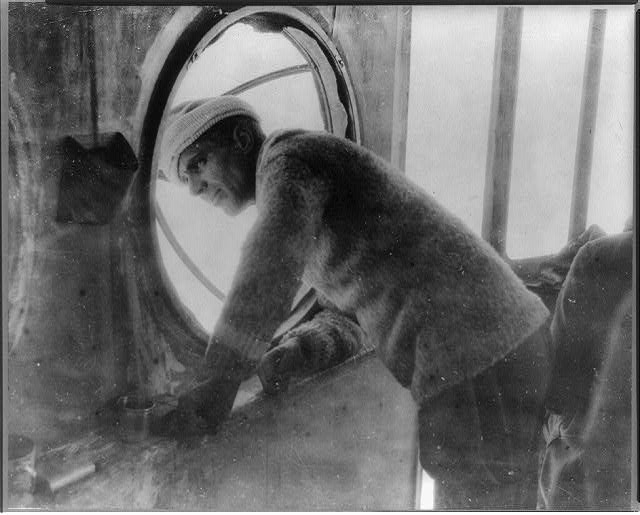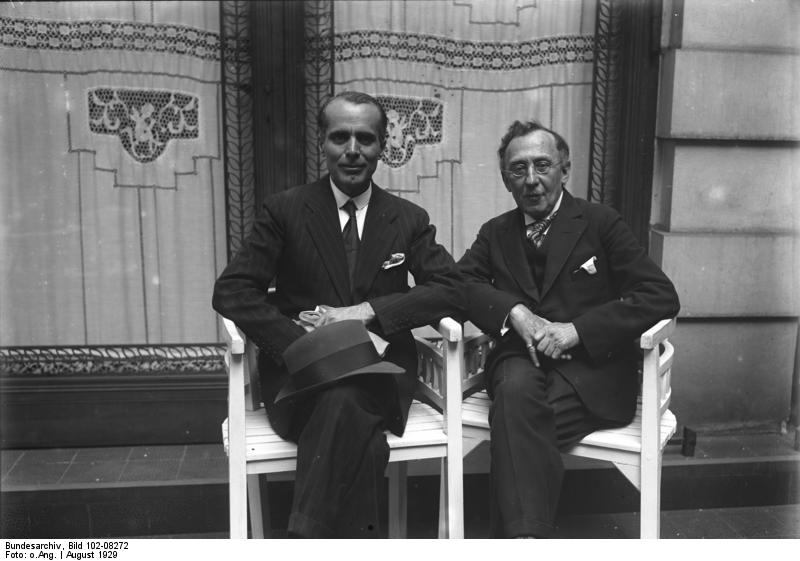<Back to Index>
- Aeronautics Pioneer Umberto Nobile, 1885
- Composer Alexander Nikolayevich Tcherepnin, 1899
- King of Sweden and Norway Oscar II, 1829
PAGE SPONSOR
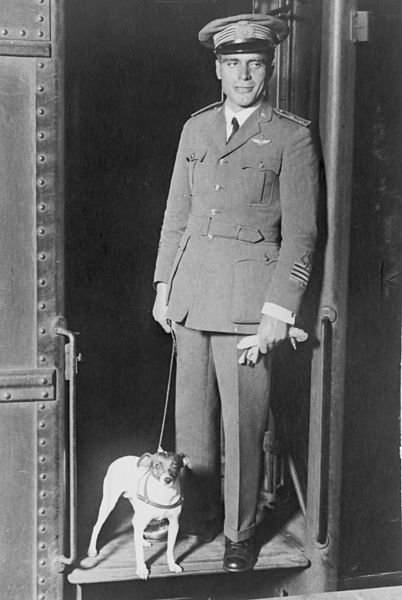
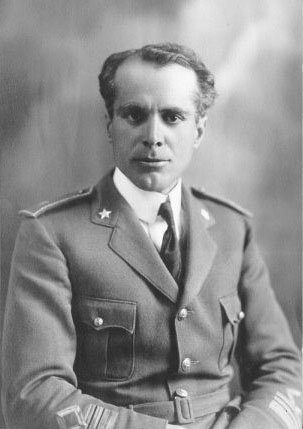
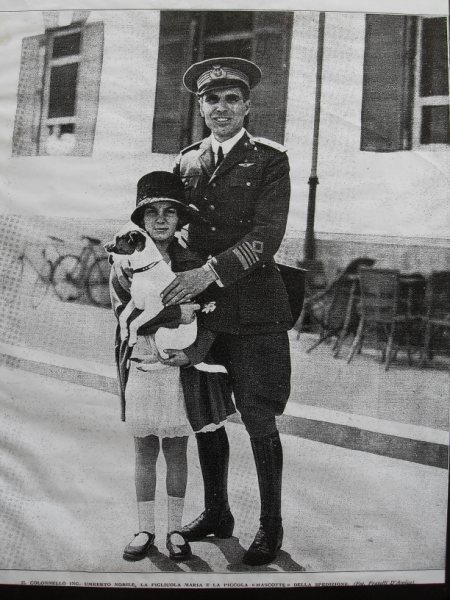
Umberto Nobile (January 21, 1885 – July 30, 1978) was an Italian aeronautical engineer and Arctic explorer. Nobile was a developer and promoter of semi - rigid airships during the Golden Age of Aviation between the two World Wars. He is primarily remembered for designing and piloting the airship Norge, which may have been the first aircraft to reach the North Pole, and which was indisputably the first to fly across the polar ice cap from Europe to America. Nobile also designed and flew the Italia, a second polar airship; this second expedition ended in a deadly crash and provoked an international rescue effort.
Born in Lauro, in the southern Italian province of Avellino, Nobile graduated from the University of Naples with degrees in both electrical and industrial engineering. In 1906 he began working for the Italian state railways, where he worked on electrification of the rail system. In 1911 his interests turned to the field of aeronautical engineering, and he enrolled in a one year course offered by the Italian Army. Nobile had always been fascinated by the work of airship pioneers such as Ferdinand von Zeppelin. When Italy entered World War I in 1915, the then 29 year old attempted three times to enlist, but was rejected as physically unfit for service.
Commissioned in the Italian air force, Nobile spent the war overseeing airship construction and developing new designs. The Italian military had already used airships as early as 1912, during the Italo - Turkish War, for bombing and reconnaissance. Italy built about 20 M - class semi - rigid airships with a bomb load of 1000 kg which it used for bombing and anti - shipping missions. The Italians also used other, smaller airships, some of them British built. None of Nobile's designs flew until after the war.
In July 1918, Nobile formed a partnership with the engineers Giuseppe Valle, Benedetto Croce and Celestino Usuelli, which they called the Aeronautical Construction Factory. During this period he also lectured at the University of Naples, obtained his test pilot's license and wrote the textbook Elementi di Aerodinamica (Elements of Aerodynamics). He became convinced that medium sized, semi - rigid airships were superior to non - rigid and rigid designs. The company's first project was the Airship T-34, which was designed for a trans - Atlantic crossing. When the British R34 crossed the Atlantic in 1919, Nobile and his partners sold the T-34 to the Italian military. Later the U.S. Army acquired the ship, and commissioned it as the Roma. The Roma ultimately crashed in Langley, Virginia, in 1922 after hittng high tension power lines, killing 34.
That
same year, in the face of political instability and threats to
nationalize his company, Nobile traveled to the U.S. to work as a
consultant for Goodyear in Akron, Ohio.
He returned to Italy in 1923 and began construction of a new airship,
the N-1. According to his biography and numerous articles, he was also
caught up in a web of political and professional intrigue with
competitors and detractors. His principal antagonists seem to have been
General Gaetano Arturo Crocco, a competing airship manufacturer, and General Italo Balbo,
chief of the air force general staff, who sought to develop Italy's air
fleet with heavier - than - air craft rather than the airships Nobile
designed. In autumn 1925 Norwegian explorer Roald Amundsen sought
out Nobile to collaborate on a flight to the North Pole - still at that
time an unreached goal for aviators - using one of Nobile's craft.
Amundsen had previously in spring 1925 flown to within 150 nautical miles (280 km) of the North Pole, in a pair of Italian built Dornier Wal flying boats along with the American millionaire adventurer Lincoln Ellsworth,
the pilot Hjalmar Riiser - Larsen, but their planes were forced to land
near 88 degrees North and the six men were trapped on the ice for 30
days. The
Italian State Airship Factory, which had built Nobile's N-1, made it
available for the expedition March 29, 1926. Amundsen insisted in the
contract that Nobile should be the pilot and that five of the crew
should be Italian; Amundsen named the airship Norge (Norway). On April 14 the airship left Italy for Leningrad (now renamed Saint Petersburg) in Russia with stops at Pulham (England) and Oslo. On its way towards its Arctic jumping - off point, Ny-Ålesund (Kings
Bay) at Vestspitsbergen, Svalbard (belonging to Norway) it also made a
stop at the airship mast at Vadsoe (Northern Norway). On 29 April Amundsen was dismayed at the arrival of Richard E. Byrd's American expedition which also aimed to reach the Pole. On May 9, after Byrd and Floyd Bennett departed in their Fokker F-VII and returned less than 16 hours later claiming to have overflown the Pole, Amundsen was one of the first to congratulate them. The Norge crew
pressed ahead with their flight. Byrd's co-pilot Bennett is said later
to have admitted that they faked their flight to the Pole. On May 11, 1926, the Norge expedition left Svalbard. Fifteen and a half hours later the ship flew over the Pole and landed two days later in Teller, Alaska; strong winds had made the planned landing at Nome, Alaska, impossible. In retrospect, the Norge crew actually achieved their aim of being the first to overfly the Pole:
Byrd's May 9 flight, acclaimed for decades as the prestigious first
Polar flyover, has since been subjected to several credible challenges, including the discovery of Byrd's flight diary which showed that navigational data in his official report was fraudulent. The Norge "Rome
to Nome" flight was acclaimed as another great milestone in flight, but
disagreement soon erupted between Nobile (designer and pilot), and
Amundsen (expd. leader, observer and passenger) on the flight, as to
who deserved greater credit for the expedition. The
controversy was exacerbated by Mussolini's government, which trumpeted
the genius of Italian engineering and ordered Nobile on a speaking tour
of the U.S., further alienating Amundsen and the Norwegians. Despite
the controversy, Nobile continued to maintain good relations with other
polar scientists, and he started planning a new expedition, this time
fully under Italian control. Nobile's company managed to sell the N-3
airship to Japan;
however, relations between Nobile and his competitors in the fascist
government were hostile, and he and his staff were subjected to threats
and intimidation. Nobile's popularity with the public meant he was, for
the moment, safe from direct attack. When the plans for his next expedition were announced, Italo Balbo is said to have commented, "Let him go, for he cannot possibly come back to bother us anymore." The N-class airship Italia was
slowly completed and equipped for Polar flight during 1927 - 28. Part of
the difficulty was in raising private funding to cover the costs of the
expedition, which finally was financed by the city of Milan; the
Italian government limited its direct participation to providing the
airship and sending the aging steamer Città di Milano as a support vessel to Svalbard, under the command of Giuseppe Romagna. This time the airship used a German hangar at Stolp en route to Svalbard and the mast at Vadsø (Northern Norway). On May 23, 1928, after an outstanding 69 hour long flight to the Siberian group of Arctic islands, the Italia commenced
its flight to the North Pole with Nobile as both pilot and expedition
leader. On May 24, the ship reached the Pole and had already turned
back toward Svalbard when it ran into a storm. On May 25, the Italia crashed
onto the pack ice less than 30 kilometres north of Nordaustlandet
(Eastern part of Svalbard). Of the 16 men in the crew, ten were thrown
onto the ice; the remaining six crewmen were trapped as the lightened
ship swept the intact gondola skyward; the ship might have then
exploded later, but the fate of the six men was never resolved. One of
the ten men on the ice, Pomella died from the impact; Nobile suffered a
broken arm, broken leg, broken rib and head injury; Cecioni suffered
two badly broken legs; Malmgren suffered a severe shoulder injury and
suspected injury to a kidney; and Zappi had several broken ribs. The
crew managed to salvage several items from the crashed airship gondola,
including a radio transceiver, a tent which they later painted red for
maximum visibility, and, critically, packages of food and survival
equipment which quick witted engineer Ettore Arduino had managed to
throw onto the ice before he and his five companions were carried off
to their deaths by the wrecked but still airborne airship envelope and
keel. As the days passed, the drifting sea ice took the survivors
towards Foyn and Broch islands. A
few days after the crash the Swedish meteorologist Malmgren and
Nobile's second and third in command Mariano and Zappi decided to leave
the immobile group and march towards land. Malmgren, who was injured,
weakened and reportedly still depressed over his meteorological advice
that he felt contributed to the crash, asked his two Italian companions
to continue without him. These two were picked up several weeks later
by the Soviet icebreaker "Krasin". However there were persistent rumors
that Malmgren was killed and cannibalized by Zappi and Mariano. A "highly imaginative, fictionalized version" of these events was made into the 1969 film The Red Tent. The film was an Italian / Russian co-production and featured Peter Finch as Nobile, Sean Connery as Amundsen and Hardy Krüger as Lundborg. In
the wake of the crash, a collection of nations, including Soviet
Russia, Norway, Sweden, Finland, and Italy, launched the first polar
air and sea rescue effort. Privately owned ships which had been
chartered by polar scientists and explorers also participated. Even
Roald Amundsen put aside his past differences with Nobile and boarded a
French seaplane and headed for the rescue headquarters; this plane
disappeared between Tromsoe and Svalbard, and though a pontoon from the
craft was later found, the bodies of Amundsen, the pilot René Guilbaud and the four others on board were not. After a month of privation for the Italia survivors, the first rescue plane, a Swedish airforce Fokker ski plane, piloted by Lieutenant Einar Lundborg and
with Lieutenant Schyberg as observer landed near the crash site. Nobile
had prepared a detailed evacuation plan, with the most seriously
wounded man (the heavy built mechanic Cecioni) at the top of the list
and himself as number 4, with the navigator (Viglieri) and the radio
operator (Biagi) as respectively no. 5 and 6. However Lundborg refused
to take anyone but Nobile. He argued that the plane could only take one
survivor and the other seriously injured man was so heavy Lundborg was
unsure he could take off. Nobile was airlifted to Ryss Island,
base camp of Swedish and Finnish air rescue efforts. When Lundborg
returned alone to pick up a second survivor he crashed his plane on
landing, and was trapped with the other five. Eventually, Nobile reached the Città di Milano where,
he later said, he was dismayed at the incompetence he found. His
attempts to help co-ordinate the international rescue effort were
blocked, and when he threatened to leave he was placed under virtual
arrest by Captain Romagna. His telegrams to the survivors still on the
ice, as well as to various people involved in the rescue, were heavily
censored. It was wrongly reported in Fascist Italian newspapers that
his own evacuation was an obvious sign of cowardice. After 48 days on
the ice floe, the last five men of his crew were rescued by the Soviet icebreaker Krasin.
Nobile insisted that he wanted to continue the search for the six crew
who were swept away by the airship when it disintegrated, but he was ordered back to Rome with the others. Two
hundred thousand cheering Italians met Nobile and his crew on arrival
in Rome on July, 31st. This show of popularity was unexpected by
Nobile's detractors, who had been seeding the foreign and domestic
press with accusations against him. An aggrieved Nobile was not shy
about his complaints; in an interview with Benito Mussolini,
he offended the dictator by detailing his grievances at length. The
official inquiry and the embarrassment over the crash gave Nobile's
enemies the chance they were looking for: blame for the disaster was
placed on his shoulders, and he was accused of abandoning his men on
the ice - charges he would spend the rest of his life trying to dispel.
In protest of the findings, general Nobile resigned from the air force
in March 1929. He faced a further trial with the death of his wife
Carlotta in July 1934. The film The Red Tent (1969) is based on the story of the mission to rescue Umberto Nobile and the other survivors of the crash of the Airship Italia. In 1931, Nobile left Italy to work for the next four years in the Soviet Union, where he helped with the Soviet semi - rigid airship programme. Details of the Soviet Airship Program remain obscure, but there is an obvious Nobile influence in the design of the airships USSR-V5, and SSSR-V6 OSOAVIAKhIM. He was allowed to return to Italy to teach in December 1936, before going to the United States in 1939 to teach aeronautics at Lewis University in Lockport, Illinois.
When Italy went to war with the United States, he was permitted to
remain in the US, but declined the offer of a US citizenship and
instead returned to Rome in May 1942. After a brief stay, he moved to
Spain where he stayed until Italy surrendered to Allied forces in July
1943. At that time, he returned to Rome to see to the safety of his
only child Maria (born ca. 1921). In 1945 the Italian air force cleared Nobile of all charges related to the Italia crash,
and not only reinstalled him in his former rank as major general, but
promoted him to lieutenant general and paid him back pay dating to
1928. He ran for the Constituent Assembly as independent candidate in
the lists of the PCI.
He returned to his beloved University of Naples where he taught, and
wrote of his adventures, until his retirement. He also married again,
and this time to Gertrude Stolp, a German lady he had met in Spain (she
later became chief librarian at the FAO organisation in Rome). He died in Rome on July 30, 1978 after having celebrated the 50th anniversary of his two polar expeditions. The Italian Air Force Museum at Vigna di Valle (just outside Rome) has a large permanent exhibition on his achievements.
